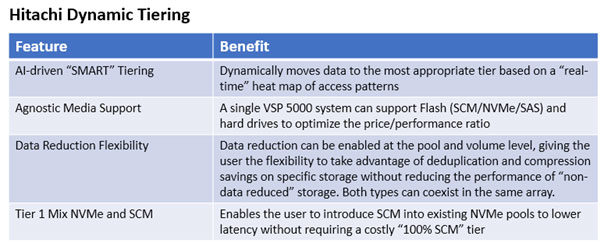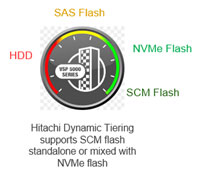Storage Class Memory: What’s Old Is New Again


We’ve all heard the adage, “What’s old is new again.” And it’s ironic that this could not be truer than when it comes to the adoption of new technologies. For example, when the first commercially available flash storage was introduced 1991, it came with the promise of unprecedented performance. But that performance came at a significantly higher price per gigabyte than traditional magnetic media. To bridge the gap between performance and price, storage vendors delivered tiering capability that enabled users to realize a price/performance benefit by mixing new technology with current technology. Only as flash with a SAS interface became affordable, did it begin to replace hard drives in storage arrays. This same trend followed with the introduction of NVMe flash 10 years ago.
Today, storage class memory (SCM) is a new memory and storage technology that offers features in both dynamic random-access memory (DRAM) and traditional flash storage. It extends the performance advantage of DRAM to stateful persistent storage, enabling the use of SCM in either memory or SSD storage use cases.
The advantages of SCM technology include:
I should note that the type of storage that our customers choose is highly dependent on both the specific use case and service level that they are trying to achieve … as well as budget. The real-world situation is that hard drives, SAS flash and NVMe flash are often mixed to deliver the optimum cost and performance configuration.
So, you are probably asking the question, “Should I continue equipping my storage with NVMe flash, or should I start considering SCM for my high-performance use cases?” Many of our customers have asked me this question, especially since Hitachi Vantara has been delivering SCM in the cache of our hyper-converged solutions since SCM was commercially introduced. With the introduction of our Hitachi Virtual Storage Platform (VSP) 5000 series storage, SCM is available as an option for the top storage tier where a storage pool can either be configured with 100% SCM, or with a mix of NVMe and SCM flash.
What needs to be considered is that new technology often comes with a price premium early in the adoption curve. The same is the case with SCM, which may be up to 10 times more expensive than a similar NVMe configuration. Now this will not always be the case, and I do expect SCM to fall in price as adoption becomes widespread and more suppliers enter the arena. In fact, we see SCM following a similar market adoption trend as NVMe flash. As NVMe product offerings matured, they hit a tipping point where the price was comparable to SAS flash. That was the trigger where the storage market shifted the lion’s share to NVMe flash. What we have learned repeatedly is that tech market ubiquity is fueled by a rationalized balance of price and benefit.
There is no doubt that SCM is gaining ground. Much of the market penetration is being driven by use of SCM as cache in both servers and hyperconverged storage. Now cache is a first step implementation as SCM can easily be adapted into existing architectures. However, to realize the performance promise of SCM’s potential in storage, it must be deployed as storage media. This is a more complicated engineering task. Unlike some competitors, Hitachi Vantara designed the VSP 5000 series storage solutions to leverage the benefits SCM and NVMe flash. With the VSP 5000 series, we started with “clean sheet” design that was not hindered by legacy SAS architecture or the need to retrofit.
But with SCM currently carrying a price premium, we have given customers the ability to add SCM to their VSP 5000 series whenever they are ready. In this way, their storage investment is protected.
Hitachi VSP 5000 storage solutions offer incredible flexibility by enabling the mix of SCM flash with NVMe flash utilizing our “AI-driven” Hitachi Dynamic Tiering (HDT). The table below points out why HDT provides unprecedented flexibility while “future-proofing” storage investments for our customers.


Again, this adoption will be use-case driven. OLTP, real-time analytics and machine learning are applications that will drive the need for SCM based storage. As we enter the age of widespread 5G and Quantum computing, SCM will assure that storage will not become the bottleneck.
Yes, SCM will take the stage front and center in flash storage technology. I advise that you get familiar with the technology but, more importantly, audit your infrastructure to see where it may be required, based on existing and future workloads.
The most important piece of advice I would give would be to make sure that any new storage investments enable you to make a low-risk transition to SCM technology. This includes the ability to upgrade nondisruptively to SCM storage at any time, and the flexibility to configure efficiently to meet required service levels. SCM is currently too expensive to overprovision, so be sure to check out the VSP 5000 series equipped with our latest release of Hitachi Dynamic Tiering. We have got you covered and can assure you that your journey to SCM will be successful.
Colin Gallagher is Vice President, Product Marketing at Hitachi Vantara.

Colin leads product marketing for storage systems and software, and converged/hyper-converged solutions. He has 25-years’ storage marketing and product management and has a passion for telling stories about technical products that help customers solve business challenges.